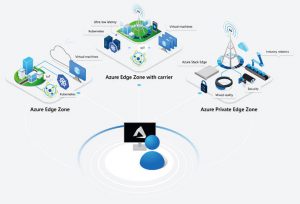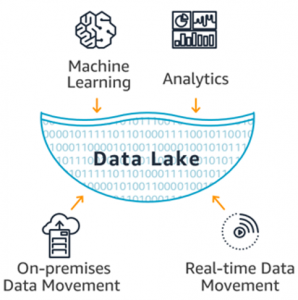
What Players should do in Edge Computing
Deploy/manage/own edge locations:
With this role, the operators will deploy, administer and become “owners” of edge locations. They will become providers of edge locations for customers who want to use these locations to expand their cloud services. Edge locations will provide edge cloud resources such as computing, servers, fiber connectivity, etc. to 3rd parties. In addition, it is possible that they will have to set up new edge locations (this will cost a lot of money) or they will take advantage of available infrastructure facilities such as existing buildings or offices of operators. For example, Telefonica or Telstra plan to turn thousands of their offices into edge data centres.
However, the market for this direction is quite “limited”. Currently, companies that are willing to use these edge locations are mostly video or CDN companies. Netflix is a good example. Therefore, the current demand for this direction is not much and the competition is quite high as Netflix is willing to search for alternatives to edge locations for higher performance.
In addition, another problem is the selection of edge architecture for edge locations. Currently, ETSI MEC is occupying the highest percentage of becoming the main architecture for edge location that operators want. Next is OpenFog, although the direction of OpenFog is different from ETSI MEC. While ETSI MEC aims to define APIs for communicating with edge locations as well as toward precise edge locations, OpenFog focuses on defining standards to ensure that all edge resources can interact with each other, no matter where the edges are. Of course, distributing these resources will depend on the specific requirements of the apps. In addition, StarlingX has recently emerged – a project of the OpenStack foundation but it is still in its infancy.
Connects/inter-manages edge nodes/locations:
This means that operators must solve problems related to connecting edge locations, no matter where they are. In Telco, they need to have SDN solutions to provide a platform to tie private edge locations (of a company or business) to edge locations of other 3rd parties as well as the edge locations of the operators themselves through the operator networks. For example, SDN will allow edge locations to download VNF templates and then edge locations will deploy those VNFs on their own. These VNFs will help edge locations connect to each other more safely through operator networks.
This will allow creating a very wide, dense and easy scale network of edge locations. The operators are also promising to switch from the above direction to join the market of the this direction. Besides, they are also negotiating to “shake hands” with other location providers instead of just using their available edge locations. This is in general a new race among operators in cooperating with partners to get the best edge positions. This is a new direction, temporarily called a “neutral host” because the position of operators in this market is just the “connector”. The owners of edge locations will be non-operator units.
So what do the operators need to do if they want to join in this direction?:
Firstly, they should build a good scale, scalable IaaS facility to appeal to edge location owners, along with collaboration. In other words, for instance, if banks, hospitals are edge locations, operators should build a good, scale, capable infrastructure including dense base station systems (in usecases of 5G), a platform SDN is extremely good to ensure virtualized connection between edge locations or a series of edge locations of those operators to prove their own capabilities. Akraino project helps to build edge locations quickly and easily. In addition, Vapor IO is also promising to build edge cloud nodes at cell sites.
Another way is to have a strategy to move on to the third direction as below, providing a complete portfolio. Now the operators will play a few more roles as edge-based app enabler.
Enable edge-based applications:
In simple words, we now have a set of edge locations connected together through virtualized networks created by SDN, the rest is to run the apps and services on those location edges. Operators who follow this path can develop their own edge-based apps/services or co-develop with other companies, aiming to provide SaaS at the edge. They can also create platforms for developers to develop new apps/services at the edge. Developers at this time do not care where the apps/services run because the operators themselves will take advantage of the ecosystem of edge locations to “put” the app/service into the appropriate edge location.
A lot of giant corporations are going in this direction like Huawei, Nokia, Ericsson because they want to occupy vertical markets such as AR/VR, IoT, connected vehicles, etc. These giants themselves are developing their own edges, providing apps/services on those edges and selling to customers. While waiting for 5G to become more mature, the network they provide here is Private LTE (PLTE) to “fill-the-gap”.
However, the competition in this direction is extremely hash as the operators will have competitors from non-operators, public cloud providers (AWS for example) and it has not yet appeared a “killer” app for the edge. In addition to building an ecosystem for the edge-based apps, it takes a lot of time, needing a lot of network resources as well as having to complete a platform API for app developers.
Some silos in understanding Edge Computing
– In the human being history, every IT project has been done because it would save money, make money or do both. Even it does not create a new product but satisfying customers, it still makes money and does some improvements. So, by virtue, Edge computing is financially creating a new business model or improve the existing business model.
– There are some projects out there doing edge computing but they are not Edge by all definitions. It is just about distribution of resources. Cloud computing in some senses is also distributing resources. However, one of the most critical factor that makes Edge happen is latency.
– People are easy to mis-understand IoT and Edge. They get confused and make some wrong statement that they are doing Edge computing but in fact, they are doing IoT. Edge will be helpful and become a future solution for a location where IoT devices communicate in order to send data back and forth. In fact, IoT devices are important citizens in ecosystem of Edge computing but in virtue, they are only devices sending data, in contrast, Edge is location where data sent from IoT devices stored, processed.



